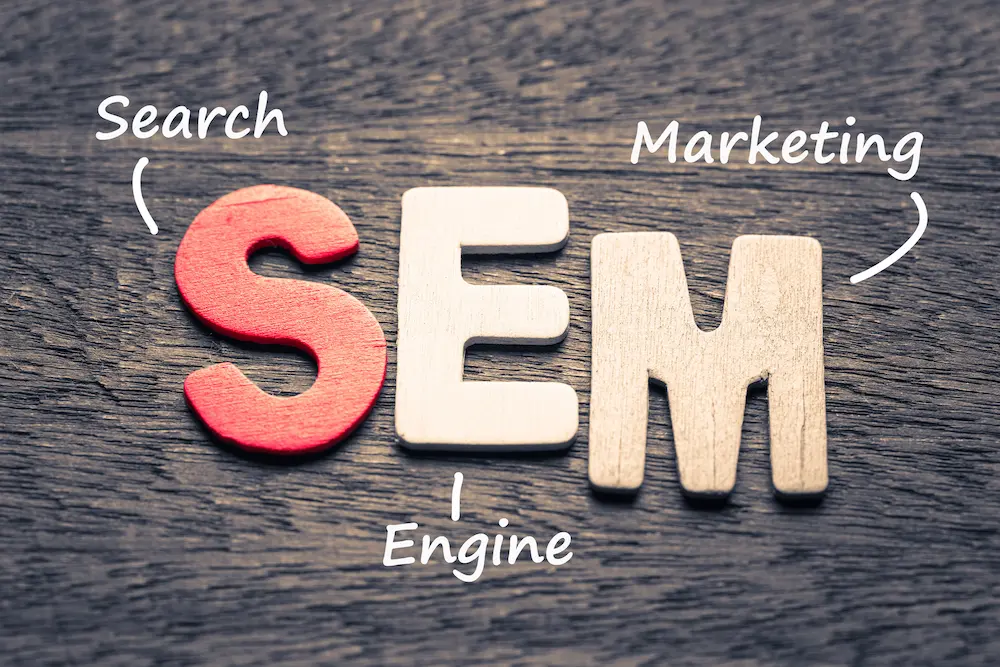Think of your landing pages as inviting doormats to your digital storefront. They must cater to both search engines and your audience, ensuring a seamless user experience. In this comprehensive guide, embark on a journey to master the art of optimizing your landing pages for SEM success, enhancing your online presence, and ultimately boosting conversions.
- Creating Captivating Landing Pages
When it comes to SEM management, your landing pages are the key to success. Begin by understanding the intent behind the search queries that draw visitors to your landing pages. Tailor your content to address their needs, desires, and pain points. Your landing page should resonate with the visitor’s mindset, guiding them toward the desired action.
Remember, SEM transcends keywords; it centers on relevance. Ensure that your landing page content aligns seamlessly with the ad copy that directed you to the page. Maintain consistency in messaging, design, and the overall user experience. This helps establish trust and credibility, which is essential for converting clicks into customers.
The loading speed of your landing page matters. Search engines prioritize user experience; a slow-loading page can result in high bounce rates and lower rankings. Enhance image optimization, minimize redundant scripts, and harness browser caching techniques to guarantee rapid loading of your landing page. A landing page that loads quickly not only maintains visitor engagement but also communicates to search engines that your page merits a superior ranking.
- The Significance Of Relevant Keywords
Keyword research serves as the fundamental building block of SEM. They represent the words and phrases users input into search engines in search of information or solutions. To optimize your landing pages, delve into thorough keyword research.
Identify high-value keywords relevant to your business, products, or services. Once you compile a list of pertinent keywords, incorporate them judiciously into your landing page content.
Remember, it’s not about indiscriminately stuffing keywords; it’s about using them naturally within your headings, subheadings, and body text. Your content should flow seamlessly, delivering value to you while subtly signaling to search engines that your page is pertinent to the query.
- Crafting A Compelling And Clear Call-To-Action (CTA)
Your landing page should expertly guide you toward a specific action, whether making a purchase, subscribing to a newsletter, or requesting a quote. The call-to-action (CTA) serves as the bridge connecting your content to the desired outcome. Forge a CTA that captivates, clarifies, and entices.
Avoid mundane phrases like ‘Click Here’ or ‘Submit.’ Instead, employ action-oriented language highlighting the benefits awaiting you when you take the desired action. For instance, use phrases like ‘Get Your Free E-Book,’ ‘Start Your 30-Day Trial,’ or ‘Request a Customized Quote Today.’ Place your CTA prominently on the page, ensuring it remains easily visible without excessive scrolling.
- Mobile Optimization For A Seamless SEM Experience

In the era of smartphones, mobile optimization is essential. A significant portion of SEM traffic originates from mobile devices, and search engines prioritize mobile-friendly pages. Ensure your responsive landing pages seamlessly adapt to various screen sizes and orientations.
A mobile-optimized landing page should load rapidly on mobile devices, featuring legible fonts and appropriately sized images. It should also have a user-friendly layout that eliminates the need for extensive zooming or horizontal scrolling. By providing a seamless mobile experience, you meet search engine requirements and cater to a vast and growing audience.
- Cultivating Trust Signals And Credibility
Building trust with your audience is paramount in SEM management. Visitors are more likely to engage and convert when they trust your brand and landing page. To establish trust, incorporate trust signals such as customer reviews, testimonials, security badges, and industry certifications on your landing pages.
Ensure that your landing page exudes professionalism and authority. A well-crafted page with organized content and intuitive navigation instills confidence in you. Showcase your expertise, highlight awards or recognition, and provide transparent contact information to demonstrate your commitment to transparency and credibility.
- Continuous Testing And Enhancement
Search engine marketing is an ongoing process of refinement and improvement. Regularly monitor the performance of your landing pages through analytics tools. Track key metrics like click-through rates (CTR), conversion rates, bounce rates, and user behavior.
Conduct A/B tests to compare different versions of your landing pages, experimenting with variations in headlines, CTA buttons, images, and content. Analyze the data and use insights to optimize your landing pages further. The SEM environment is dynamic, demanding continuous adaptation and refinement of your landing page strategies.
Conclusion
In your quest to optimize your landing pages for SEM, you’ve learned how to craft captivating landing pages that resonate with your audience and seamlessly align with search engines. From understanding user intent to mobile optimization and trust signals to ongoing testing, these strategies empower you to elevate your SEM proficiency.
As you implement these techniques, anticipate improved search engine rankings and a surge in conversions, ultimately heralding success in your digital marketing efforts. Begin optimizing your landing pages today, paving the way for SEM success.

